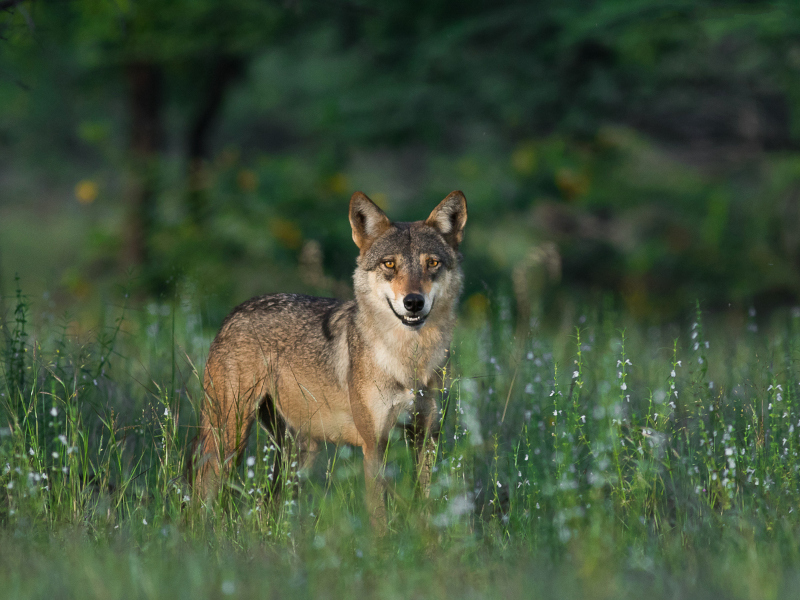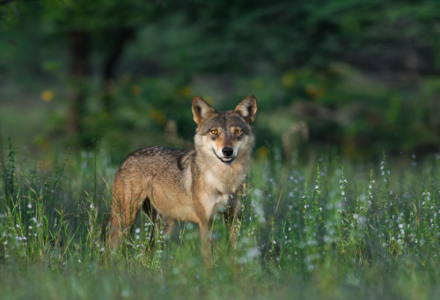
Photographer: Rudraksha Chodankar
CC License: https://bit.ly/2X6Mh1w
Indian Wolf Facts
- For the moment, the Indian Wolf remains generally considered to be a subspecies of gray wolf. However, recent research indicates that it may represent an entirely separate species.
- Many experts in the field also believe that it represents the specific species from which modern domesticated canines evolved.
- While the IUCN does not yet list it as an Endangered Species, many believe it to be threatened. Estimates place its numbers at fewer at 3,000 extant individuals.
- The primary threat to its survival remains hunting, especially in India, even though it technically has protection as an Endangered Species in that country.
Related Articles
Indian Wolf Physical Description
The remarkable Indian Wolf ranks as one of the smallest known varieties of the wolf. Sexual dimorphism does present itself, but typically only in regards to weight. Males typically attain a weight of up to 60 lb (27 kg) while females rarely exceed 40 lb (18 kg).
Both genders reach an average height at the shoulder of roughly 32 in (81 cm). Meanwhile, an average body length generally equals about 5.2 ft (1.6 m).
The fur develops thick, with a coarse outer layer and a softer inner layer. Coloring usually consists primarily of shades of grey with random flecks of black. However, individuals displaying such colors as brown, black, red, or even white do occur.
- Kingdom: Animalia
- Phylum: Chordata
- Class: Mammalia
- Order: Carnivora
- Family: Canidae
- Genus: Canis
- Species: Canis lupus pallipes
Indian Wolf Distribution, Habitat, and Diet
While it once possessed a much greater range of distribution, today the Indian Wolf only exists in parts of Western Asia and the Indian subcontinent. This includes the countries of Israel, Iran, Turkey, Syria, Pakistan, and Afghanistan.
This rather remarkable creature usually inhabits regions of either grassland, scrubland, or semi-arid pastoral areas. Its greatest numbers appear eight of the Indian states.
This impressive animal typically lives in small packs, usually including 6 – 8 individuals. However, only the alpha male and female reproduce. Litters commonly consist of 3 – 5 pups, with both parents caring for them until around 6 months of age.
As with other types of wolves, its diet remains entirely carnivorous. Prey typically includes smaller animals such s rabbits and rodents. Yet larger prey such as antelope or wild boar will occasionally be hunted if smaller prey becomes scarce.
Species Sharing Its Range
Indian Bullfrog Phoenix Plant Vampire Moth
Check out our other articles on 7 Breathtaking Beaches of the World, Mexican Mole Lizard, Whale Shark, Lechuguilla Cave

